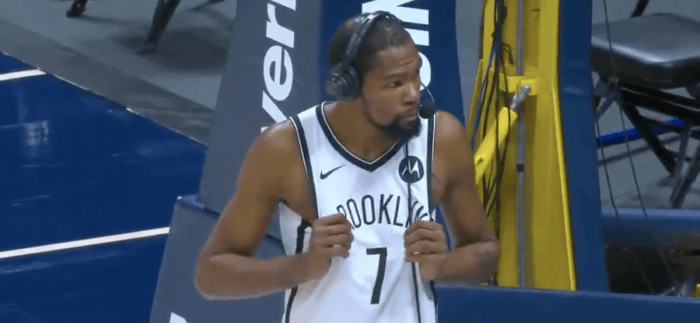Using the naked eye, I think most Nets fans would agree that the 2009-10 version of Yi Jianlian looks like a different player compared to his first two seasons in the NBA. Nets Are Scorching and other writers have noted Yi’s increased muscle mass, his aggressiveness in taking the ball to the rim, and how he’s more of a focal point on offense than ever before. For better or worse, all of these things are different about Yi.
But that’s the funny thing about the naked eye. Sure, it tells you a lot, but it’s also deceiving. Because if you look strictly at Yi’s numbers for this season and exclude his off-the-chart play after returning from injury in December, what you’re left with is a player who’s statistically very similar to the Yi Jianlian of 2008-09, a player, who by most accounts, was a disappointment.
Let’s first establish what’s statistically different about Yi, because I believe when coupled with what’s statistically similar or worse, it paints a very ominous picture about the kind of player the Nets have here. According to Hoopdata, about 44 percent of Yi’s total field goal attempts are coming at 10 feet or less, compared to 29 percent last year – which gives merit to the idea that Yi is taking the ball to the hoop more aggressively, rather than settling for jumpers. Meanwhile, Yi’s usage rate is 19.5 percent, up from 18.5 in 08-09, and his assist ratio is 4.6, way down from last year’s 8.8. In fact, out of 68 power forwards ranked by ESPN, Yi’s assist ratio ranks him 65th.
Here’s what’s more or less the same: Yi shot a putrid 38 percent from the field last season. Taking away his hot restart in December, Yi is shooting the ball at a 37 percent clip in January and February. And while he’s scoring more points and taking more shots than last year, he’s not necessarily doing it more efficiently. His points per 40 minutes last season was 14.8. In January and February, he’s averaging 15.6 points per 40. Here’s something else to keep in mind as the season progresses. His month-to-month field goal percentage and points per game averages look like this: December (4 games, 54 percent shooting, 22.5 ppg); January (14 games, 39 percent shooting, 13.4 ppg); February (4 games, 30 percent shooting, 8.5 ppg). Obviously the small sample sizes of December and February skew those numbers considerably, but it’s not a good sign that Yi’s numbers are on a downward spiral this season considering his history of inconsistency.
Meanwhile, putting together all of the numbers, here are some things we do know about Yi. While he’s more aggressive and taking hypothetically “better” shots closer to the rim, he’s actually shooting the ball at a worse clip than last season. How a player is shooting at a lower percentage despite taking a higher quantity of higher percentage shots is a bit mystifying, but that logic more or less sums up Yi’s career in the NBA.
The question remains what kind of player the Nets have in Yi. Obviously if he could regain his form from December and early January, the front office would likely consider keeping Yi around for the long-term for his offensive talent. But as many predicted, Yi is looking like he’s regressing back to the shoot-too-much, pass-too-little, no defense player of yesteryear. If his game continues in this downward direction, the front office and coach Kiki Vandeweghe have to consider meaningful change for Yi’s role with this team – a change that they should stick with in the long-term, because the polarizing Chinese import is running out of chances to prove he’s really all that different.



















